The Human Face of Famine
-
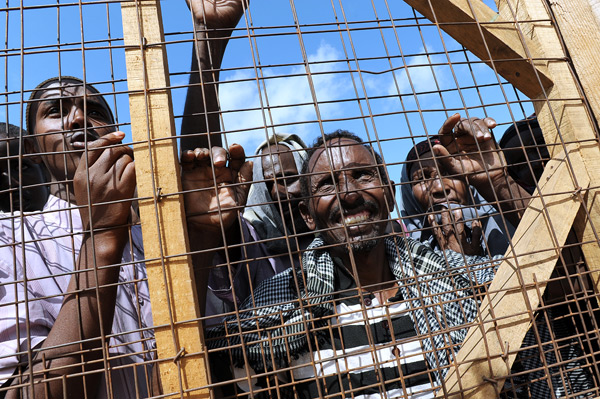 Photograph by Peter Biro/IRC.
Photograph by Peter Biro/IRC.New Arrivals
More than 1,300 Somali refugees arrive at the already overcrowded Dadaab camp every day. The IRC has helped to establish reception centers where newly arrived refugees receive food, health screenings, and medical referrals. Here, people gather outside the fence at one of the reception centers, waiting to be admitted.
Return to the article "This Is What Famine Looks Like."
-
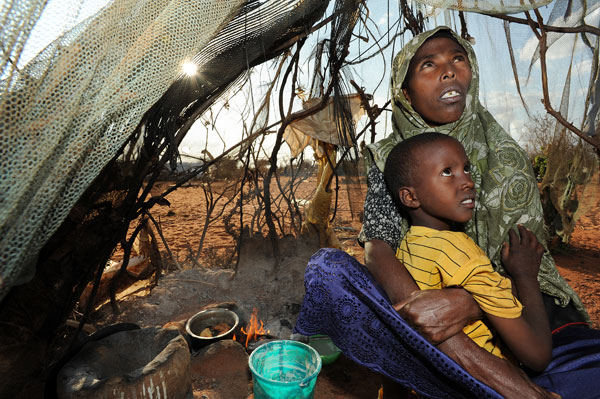 Photograph by Peter Biro/IRC.
Photograph by Peter Biro/IRC.Few Possessions
Many refugees arrive in Dadaab with nothing, stripped even of their clothes by militant groups or bandits who roam the area near the Kenya-Somalia border.
-
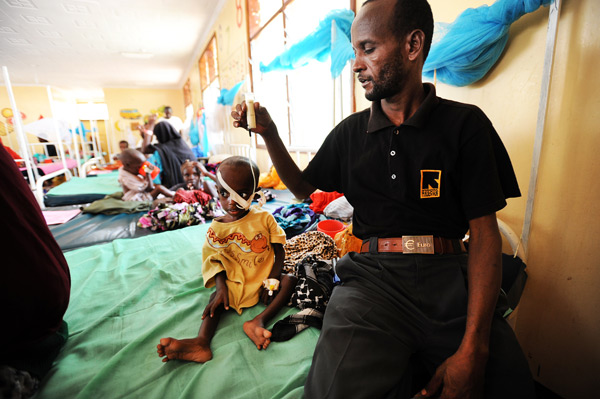 Photograph by Peter Biro/IRC.
Photograph by Peter Biro/IRC.Help for the Malnourished
UNHCR, the U.N. refugee agency, estimates that about 40 percent of the Somali children arriving at Dadaab are malnourished. Once they are identified as such, the children are rushed to the IRC’s stabilization center, part of the IRC-run hospital in Hagadera, one of three sites that make up the sprawling and overcrowded Dadaab refugee camp. There they receive fortified food and medical care.
-
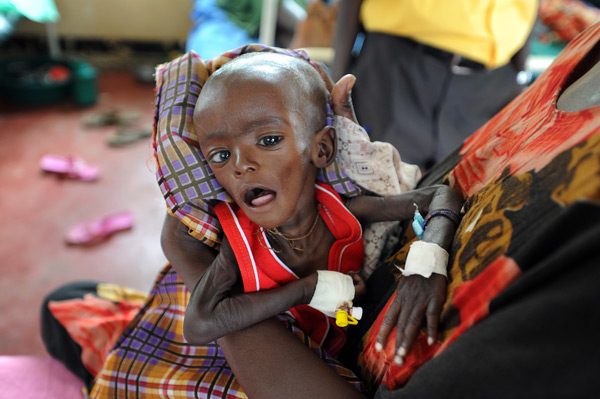 Photograph by Peter Biro/IRC.
Photograph by Peter Biro/IRC.Back From the Brink
Minhaj Gedi Farahi, who is 7 months old, arrived at the stabilization center weighing only 6 and a half pounds and on the brink of death. “After a week’s care he has gained 400 grams [almost a pound], which is a remarkable improvement,” said the IRC’s Dr. John Kigora. “Against all odds, he will survive.”
-
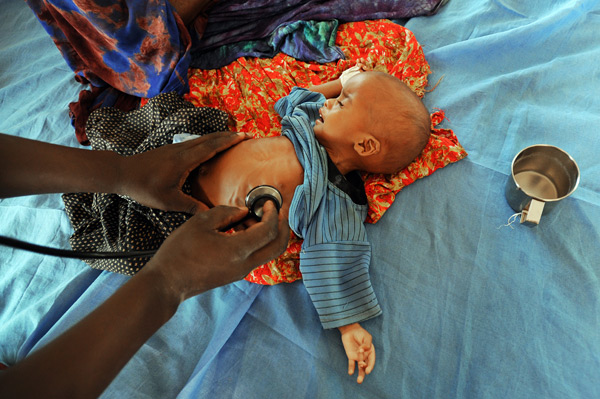 Photograph by Peter Biro/IRC.
Photograph by Peter Biro/IRC.Critical Condition
One-year-old Abdirahman Mohamed is in critical condition. Dr. Kigora and his colleagues constantly monitor the child, who is suffering from both severe malnutrition and pneumonia.
-
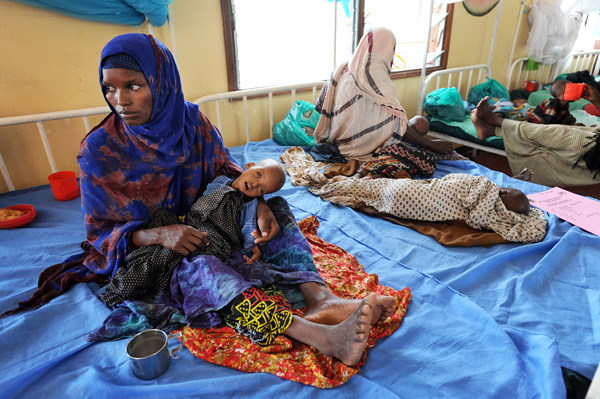 Photograph by Peter Biro/IRC.
Photograph by Peter Biro/IRC.Nothing To Return To
Halima, Abdirahman's mother, said the drought killed all her family’s livestock—10 cows and two goats. “We have nothing left,” she said. “We have nothing to return to. I’m scared about the future.”
-
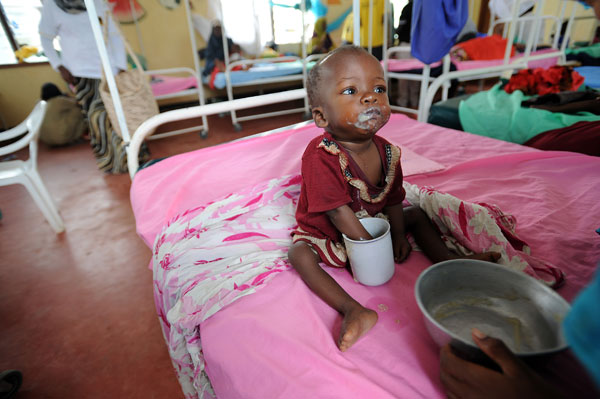 Photograph by Peter Biro/IRC.
Photograph by Peter Biro/IRC.Fortified Foods
At the Hagadera stabilization center, acutely malnourished children, infants, pregnant women, and new mothers receive food fortified with micronutrients.
-
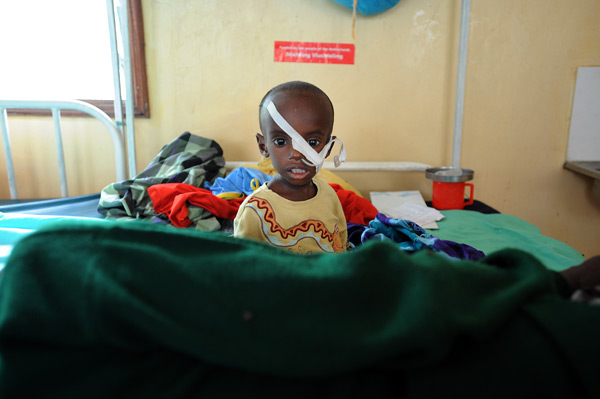 Photograph by Peter Biro/IRC.
Photograph by Peter Biro/IRC.A Survivor
Abdallah Ibrahim Jare and his family walked for 25 days across the desert from their village in southern Somalia before reaching safety in Dadaab. The drought killed their crops and animals, leaving them with no food for the journey. Abdallah’s wife died of fatigue and starvation along the way.
-
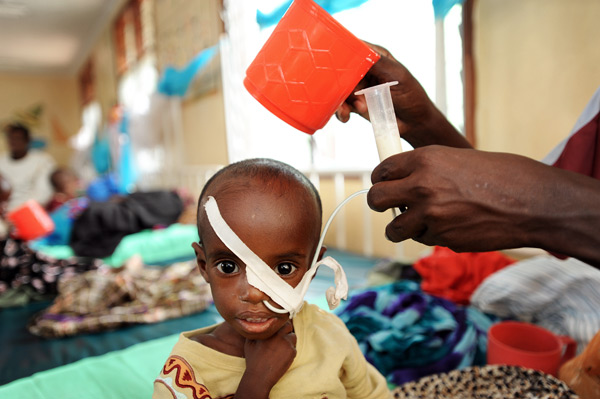 Photograph by Peter Biro/IRC.
Photograph by Peter Biro/IRC.On the Road to Recovery
When Abdallah’s son, 3-year-old Aden Abdile Ibrahim, arrived in Dadaab, he weighed only 11 pounds. An average 3-year-old boy should weigh around 30 pounds. After a week of treatment in the IRC stabilization center, Aden has gained 2 pounds and is on his way to recovery.
-
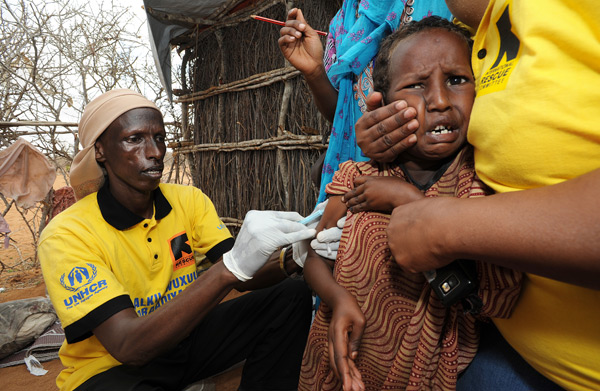 Photograph by Peter Biro/IRC.
Photograph by Peter Biro/IRC.Time for a Shot
Disease outbreaks are a significant risk in Dadaab, which hosts four times the population it was built for. In response, aid groups this week launched a mass vaccination campaign for polio and measles.
-
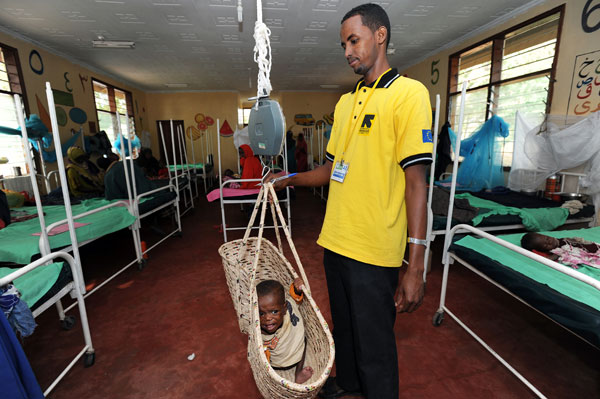 Photograph by Peter Biro/IRC.
Photograph by Peter Biro/IRC.On the Scales
Every morning, infants are weighed and measured in the stabilization center to chart their recovery. Bashir Halane, an IRC nutritionist, checks a baby who has gained weight over the last few days.
-
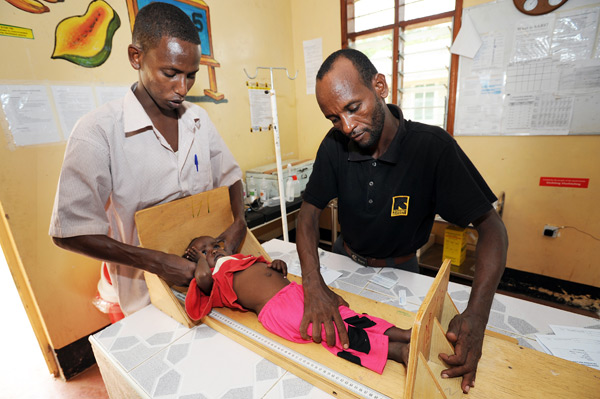 Photograph by Peter Biro/IRC.
Photograph by Peter Biro/IRC.Weights and Measures
Hussei Abdullahi, an IRC nurse’s assistant (left), and nutritionist Ismail Hussein Omar measure a refugee girl at the stabilization center.
-
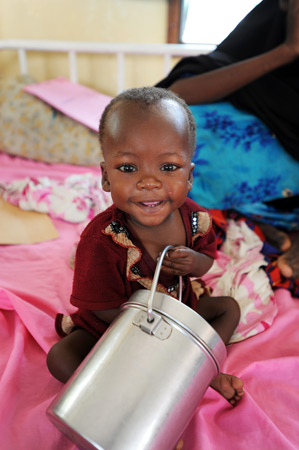 Photograph by Peter Biro/IRC.
Photograph by Peter Biro/IRC.Back to Life
One-and-a-half-year-old Abdi Awow Abdullah is being discharged from the stabilization center only six days after he arrived in critical condition. “He has come back to life,” Kigora said.